Laurie Alberts

“In Laurie Alberts’s landscape paintings, color saturation penetrates the viewer like an elemental experience of love. Often paradoxically wavering between clarity and mood, they’re suffused as much with sensations as they are depictions of light, shadow, reflection, time, and space. While they might be “about” trees, rivers, clouds, and grasses, they are equally about seeing emotion in images free of the burden of narrative.”
— Alice Fogel, former Poet Laureate of New Hampshire and author of Nothing But, considerations on abstract expressionism
From a very early age, Laurie Alberts found solace and adventure in the woods and fields of northern New England. When her family moved from New Hampshire to suburban Boston, she had to work harder to find these open spaces but managed to explore whatever woods and swamps hadn’t yet been turned into houses. When she wasn’t outdoors, she was drawing, painting, and writing stories. Her visual art education started with childhood drawing lessons and trips to the Boston Museum of Fine Arts (where she was terrified by the Egyptian mummies and the famous painting of St.John the Baptist’s head on a platter). She had a studio — a hollow door on sawhorses — in her parents’ basement where she painted and sculpted throughout her teen years. At the end of her teens, however, she thought she had to make a decision to concentrate on only one art and she chose writing, so much more portable and not requiring the space and expensive materials of the visual arts.
After publishing eight books of fiction and memoir and a career teaching creative writing at Vermont College of Fine Arts, Hampshire College, and the University of New Mexico, Alberts realized she’d left painting behind far too long. Once she returned to painting, she never looked back. Alberts says that as a writer, her prose tended toward the grittily realistic, but painting permits her to transcend the strictly representational in favor of the emotional content of landscapes she’s inhabited or imagined. Painting allows her to enter a realm beyond language.
In keeping with her first creative incarnation as a writer, Alberts received both a B.A. and an M.F.A. in Fiction Writing. As an adult returning to art, she took classes, attended workshops, and studied one-on-one with celebrated oil painters including Rosemary Ladd, Julia Jensen, Charlie Hunter, Pam Ingalls, Mary Giammarino, Michelle Dunaway, Mary McGloughlin, and others.
Alberts’ artistic influences are varied. In her late twenties, Alberts taught in Russia, where she fell in love with nineteenth and early twentieth century Russian painters including Isaac Levitan and Valentin Serov. Contemporary painters who have influenced Alberts’ vision include the landscape abstractors Julia Jensen, John Lacey, and Carlos San Millan. Although Alberts’ own work remains more grounded in recognizable imagery than some of these artists she admires, they inspire her to continue finding new approaches and new equivalents to the physical world around her. This includes the remnants of New England mill towns, brick sentries lining the bridged and damned rivers of a lost textile industry where, as a child, she helped her father take inventory on Saturdays in a New Hampshire shoe factory.
Achieving her childhood dream of more open spaces, Alberts resides on forty acres in southern Vermont and winters in a couple of vintage Airstream campers in the red rock canyons of the Jemez mountains of New Mexico.. She and her husband Thomas O’Neill raised their daughter in both places and still live completely off the grid.
Six years ago, Alberts learned to row a single racing shell on a beautifully wooded stretch of the Connecticut River running between Vermont and New Hampshire. The river, in all its seasons and permutations, often appears in her paintings. Alberts considers rowing and painting complementary: hard work, joy, and a sense of expansion from immersion in the light and shapes of the landscapes she loves.
Alberts frequently uses cold wax medium with her oil paints because it increases luminosity and its thickness and malleability allow for scraping, scratching, and the overlay of colors and textures. She finds its very imprecision creates possibilities – directions she might not have intended, images unforeseen, paths she wants to follow.
Alberts is represented by The DaVallia Gallery in Vermont and the Geary Gallery in Connecticut. She has had solo shows at DaVallia and the Rubin Gallery of DHMC in NH and been in juried shows in Vermont and New York state. She has also sold paintings to private collectors in Vermont, New York, Chicago, Massachusetts, and South Carolina.
“Laurie Alberts’s landscape paintings are irresistible. She creates places that seem to live in her artistic bones. Rather than depict remote, majestic settings, the so-called sublime, those that might humble or dwarf us into insignificance, Alberts works on a decidedly human scale. I can’t help but feel absorbed and taken inside her landscapes, held and healed by them.”
— Deborah Gorlin former editor/chief of communications, Springfield, Massachusetts Art Museums
Laurie Alberts – Artist Statement
I live in Southern Vermont and often winter in an old Airstream camper on a mesa in New Mexico. My first creative incarnation was as a novelist, short story writer, memoirist and professor of creative writing at several colleges including the University of New Mexico, Hampshire College, and Vermont College of Fine Arts. After publishing eight books, I began painting and never looked back. In the past nine years I have studied with oil painters Rosemary Ladd, Charlie Hunter, Michelle Dunaway, Pam Ingalls, Kate McGloughlin, Julia Jensen, and others. If my writing tended toward the grittily realistic, painting has permitted me to transcend the strictly representational in favor of the emotional content of landscapes I’ve inhabited or imagined.
Because I row my 26’ single scull on a wild section of the Connecticut River, the river, in its various seasons and permutations, often appears in my paintings. I consider rowing and painting complementary: hard work, joy, and a sense of expansion from being immersed in the light and shapes of a real place I make my own through painting.
I use cold wax medium mixed with oil paints because it adds luminosity and its thickness and malleability allow for scraping, scratching and the overlay of varied colors and textures. Its very imprecision creates possibilities — directions I might not have intended, images I hadn’t imagined, paths I want to follow.

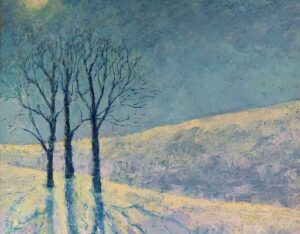
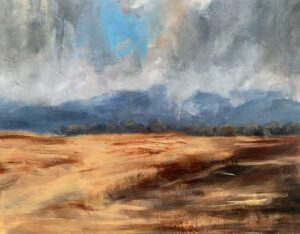
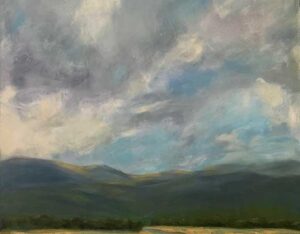
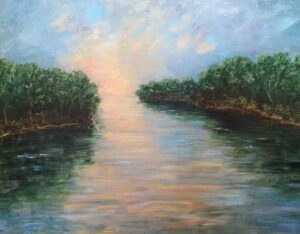
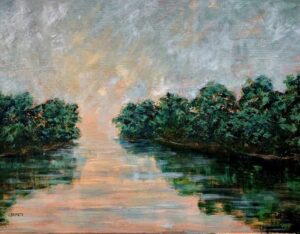
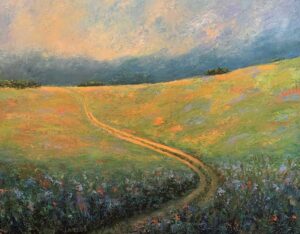
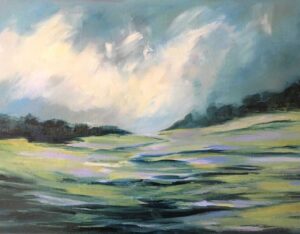
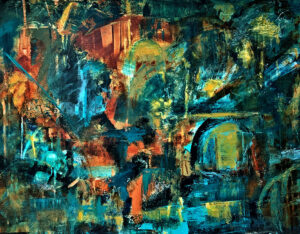
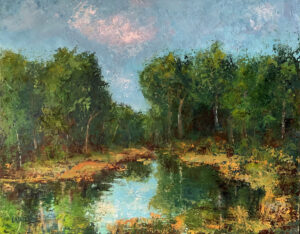
 Identity By Sunil Howlader
Identity By Sunil Howlader
 Gyan Mudra By Sunil Howlader
Gyan Mudra By Sunil Howlader
 Red Bridge By Sunil Howlader
Red Bridge By Sunil Howlader








